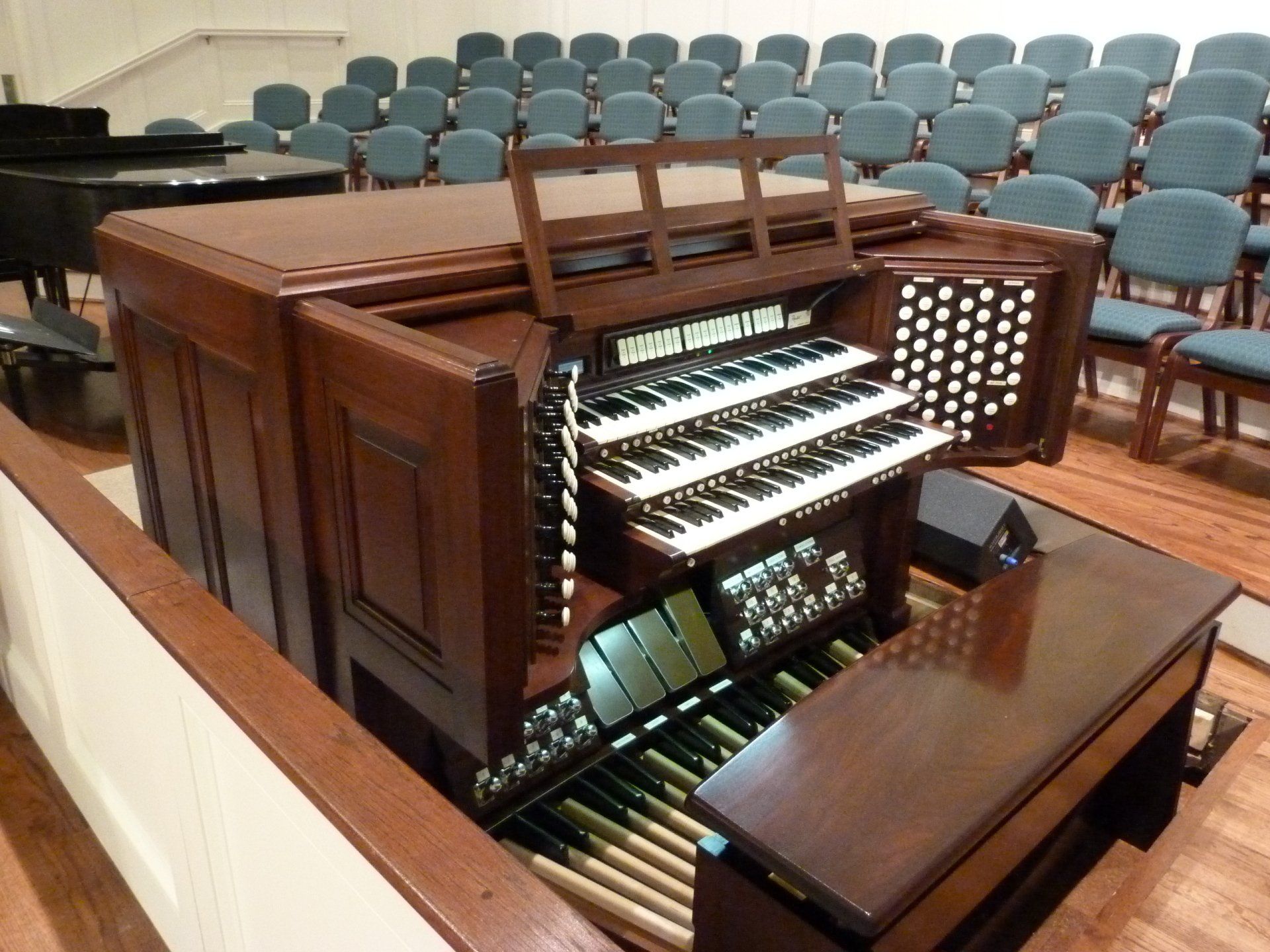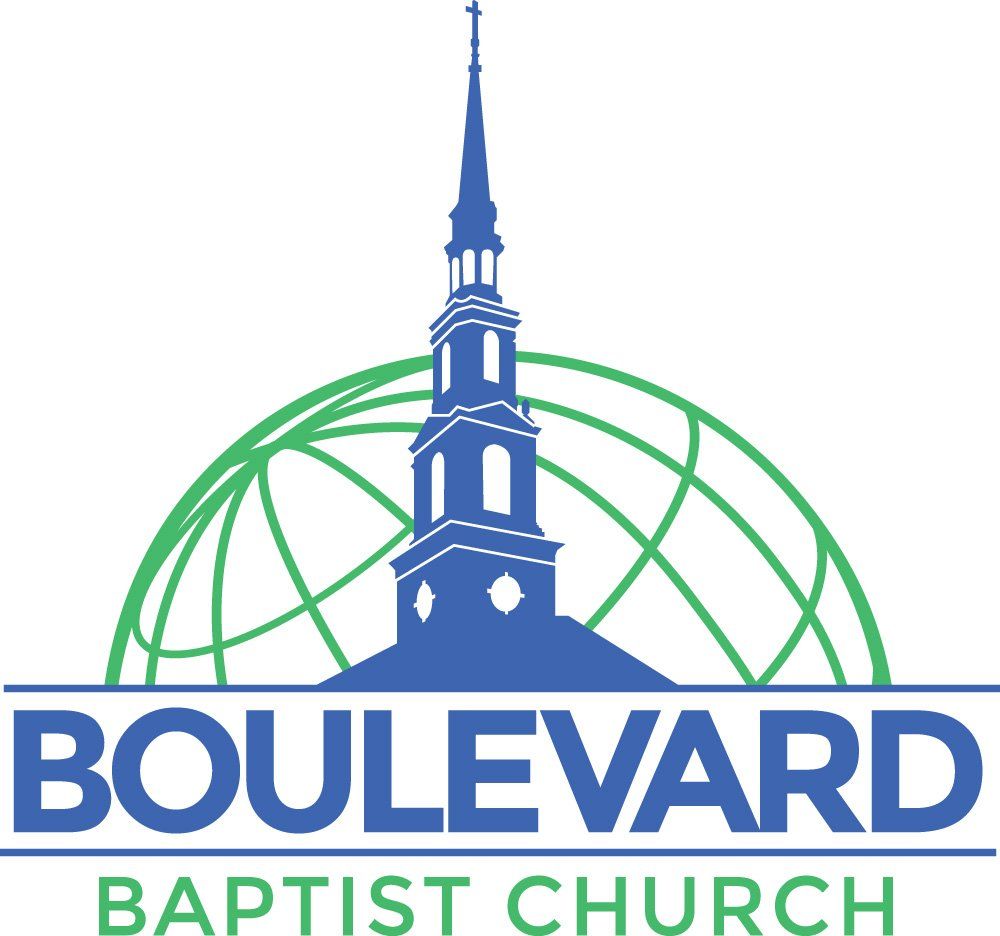Early in 1968, when plans were being formalized for the construction of the sanctuary of Boulevard Baptist Church, the Church appointed a committee to research organs for the purpose of recommending a suitable instrument for the church.
The committee heard dozens of instruments in Georgia, South Carolina, North Carolina and Tennessee and presented to the church the recommendation that the Reuter Organ Company of Lawrence, Kansas, be commissioned to build a 50 rank pipe organ for Boulevard.
A $70,000 contract was signed in 1969. Prior to the company beginning construction, the committee secured pledges for the addition of an 8-rank antiphonal division (organ pipes in the rear of the sanctuary). An addendum contract was signed for the $11,500 for this addition, bringing the total size of the instrument to 58 ranks of pipes. The total cost eventually exceeded $90,000 with the addition of the decorative facade of pipes in the rear of the sanctuary and some additional technical features. In 1969, this represented a major commitment on the part of the 500+ members of the church.
The Organ Committee worked closely with the architect, the organ builder and the acoustical engineer to assure a friendly environment for the instrument. Hard plaster, at lease one-inch thick, was specified in the sanctuary ceiling to reflect sound, particularly of the larger pedal pipes. The floor coverings were used only in the aisles to limit sound absorption and maximize reverberation time. The curve of the ceiling was flattened slightly to prevent "hot" spots.
A 32-foot set of pedal pipes was omitted from the original contract to save money ($2,500). In 1986, a gift by one of the members permitted these pipes to be added at a cost of $17,000, completing the original instrument specification.
In 2008, Boulevard Church voted to update and refurbish the Sanctuary, and also to update the organ console to a solid-state instrument. The console was refinshed and a new pedal board added along with all new stop knobs, thumb pistons and couplers. At the time of this updating of the console, Reuter Organ Company recommended that while the console was at the factory, additional stop knobs be installed on the console for seven 8-foot ranks of pipes to be added later. Later came much sooner than expected when a very generous church member contributed the funds to add these seven 8-foot ranks in time for the first GAMAC performance of the 2010-2011 Season.
The completed organ has 65 ranks of pipes (3,672 pipes) and has a replacement cost of approximately one million dollars. The pipes are located in 5 different chambers (rooms). Facing the choir loft, the pipes of the Choir division are in the room to the far left, the pipes of the Pedal division in the room to the left of the Baptistery, the Great division in the room to the right of the Baptistery, the pipes of the Swell division in the room to the far right and the pipes of the Antiphonal division in the room in the center rear of the sanctuary. The console case is made of African mahogany finished to match the sanctuary furnishings.
Although the Boulevard organ is not the largest in the state, it is certainly one of the finest examples of the organ builders' art. It has some unique features. The console is located on the platform attached to a hydraulic lift. When it is necessary to use the area for religious drama, etc., the console may be lowered six feet below the floor and covered over with temporary floor sections. When used for recitals, the console can be raised slightly above floor level, rotated 90 degrees, and by removing the choir railing, is fully visible.
Another feature of the instrument is the zimbelstern, a four-bell unit with a rotating clapper that strikes the four bells in rapid succession as long as the unit is turned on. It is used for background sound in certain 17th and 18th century organ music. It is operated by a toe-piston at the console.
This instrument has been a source of enrichment for the community, a tool for developing the talents of students of the organ and an instrument enhancing the worship experience from the first day it was used on Palm Sunday, 1971.
Click here to see the pipe organ specifications.





